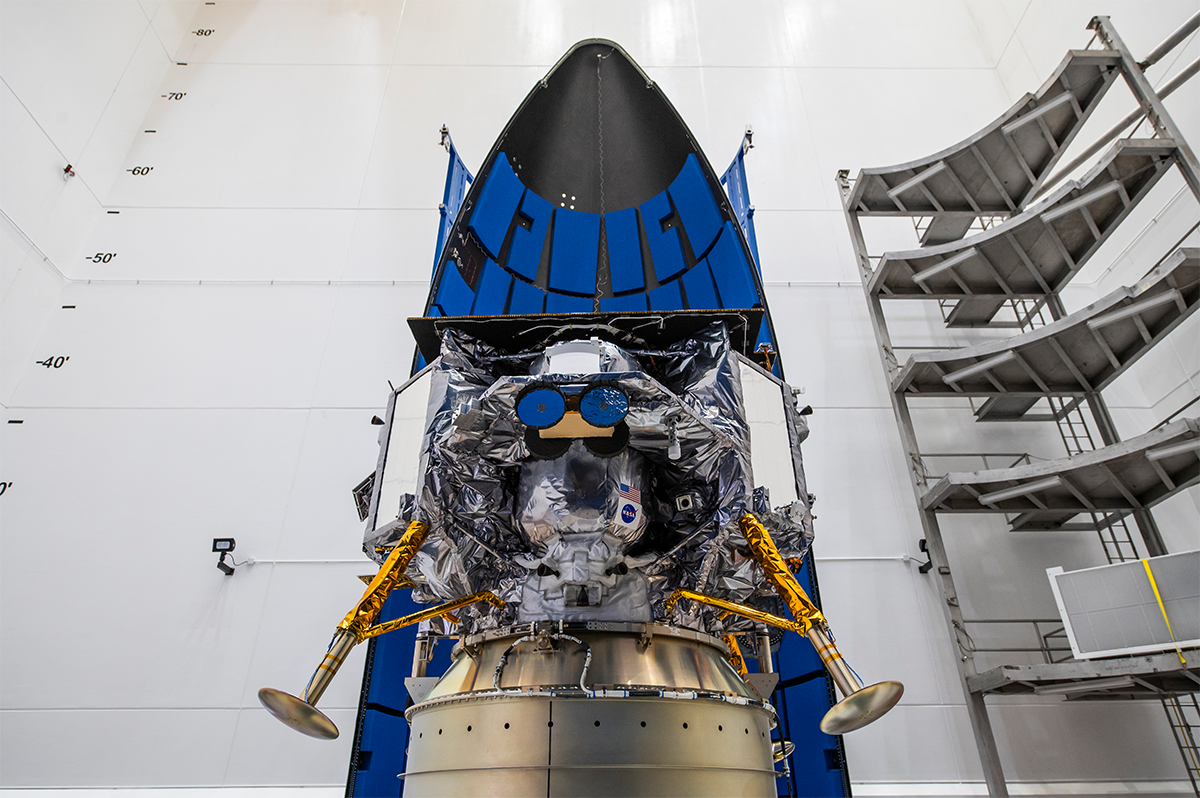Astrobotic, a Pittsburgh-based space company, announced on December 19th that its Peregrine lunar lander has completed all pre-launch integration activities.

Astrobotic, a Pittsburgh-based space company, announced on December 19th that its Peregrine lunar lander has completed all pre-launch integration activities. The lander is now ready for a launch that could potentially take place as early as January 8th, with a scheduled landing on the moon set for late February.
Initially, Astrobotic had hoped to launch the Peregrine in December, aiming for a landing attempt on January 25th. However, a delay occurred due to a wet dress rehearsal by United Launch Alliance (ULA) being interrupted by ground system problems in early December. Following the completion of the dress rehearsal, ULA confirmed a new launch date of January 8th from Cape Canaveral, Florida.
The Peregrine lunar lander is equipped to carry a total of 20 commercial and government payloads, with five of them provided by NASA as part of its Commercial Lunar Payload Services (CLPS) program. The non-NASA payloads include a small lunar rover developed by Carnegie Mellon University and a set of even smaller rovers from the Mexican Space Agency. Additionally, various commemorative and memorial payloads from different companies and organizations are part of the cargo.
Interestingly, five NASA instruments originally slated for Peregrine were removed earlier this year. Chris Culbert, NASA CLPS program manager, explained that this decision was linked to the performance of the lander and the descent engines available for it. The goal was to prioritize the success of the mission, and the demanifested payloads will be accommodated on later CLPS missions.
“If you’ve been following the lunar industry, you understand landing on the Moon’s surface is incredibly difficult. With that said, our team has continuously surpassed expectations and demonstrated incredible ingenuity,” said John Thornton, CEO of Astrobotic, expressing confidence in the mission’s success.
The launch window that opens on January 8th aims for a landing on February 23rd. Instead of a direct descent to the lunar surface, the spacecraft will enter lunar orbit, gradually lowering the apolune (the high point in its orbit) from 9,000 kilometers to 100 kilometers. This maneuver is conducted to ensure optimal lighting conditions for a safe landing. Thornton explained at a briefing on November 29th that most of the time between launch and landing is spent waiting for local lighting conditions to be suitable.
It’s worth noting that while Peregrine could be the first CLPS mission to launch, it may not be the first to land. Intuitive Machines is planning the IM-1 lunar lander mission, scheduled for launch on a SpaceX Falcon 9 between January 12th and 16th. This mission takes a more direct route to the moon, setting up a potential landing between January 19th and 21st.
However, there’s a potential hurdle for the IM-1 mission as the launch must take place from Kennedy Space Center’s Launch Complex 39A. This launch complex is currently configured for the Falcon Heavy launch of the X-37B military spaceplane, which has been delayed to no earlier than December 28th due to launch vehicle issues. Reconfiguring the pad for Falcon 9 launches takes approximately three weeks, posing a challenge to meet the January launch window for the IM-1 mission.
As the space community eagerly awaits these lunar missions, the successful execution of Astrobotic’s Peregrine and Intuitive Machines’ IM-1 could mark significant milestones in humanity’s return to the lunar surface and pave the way for future exploration and scientific endeavors.